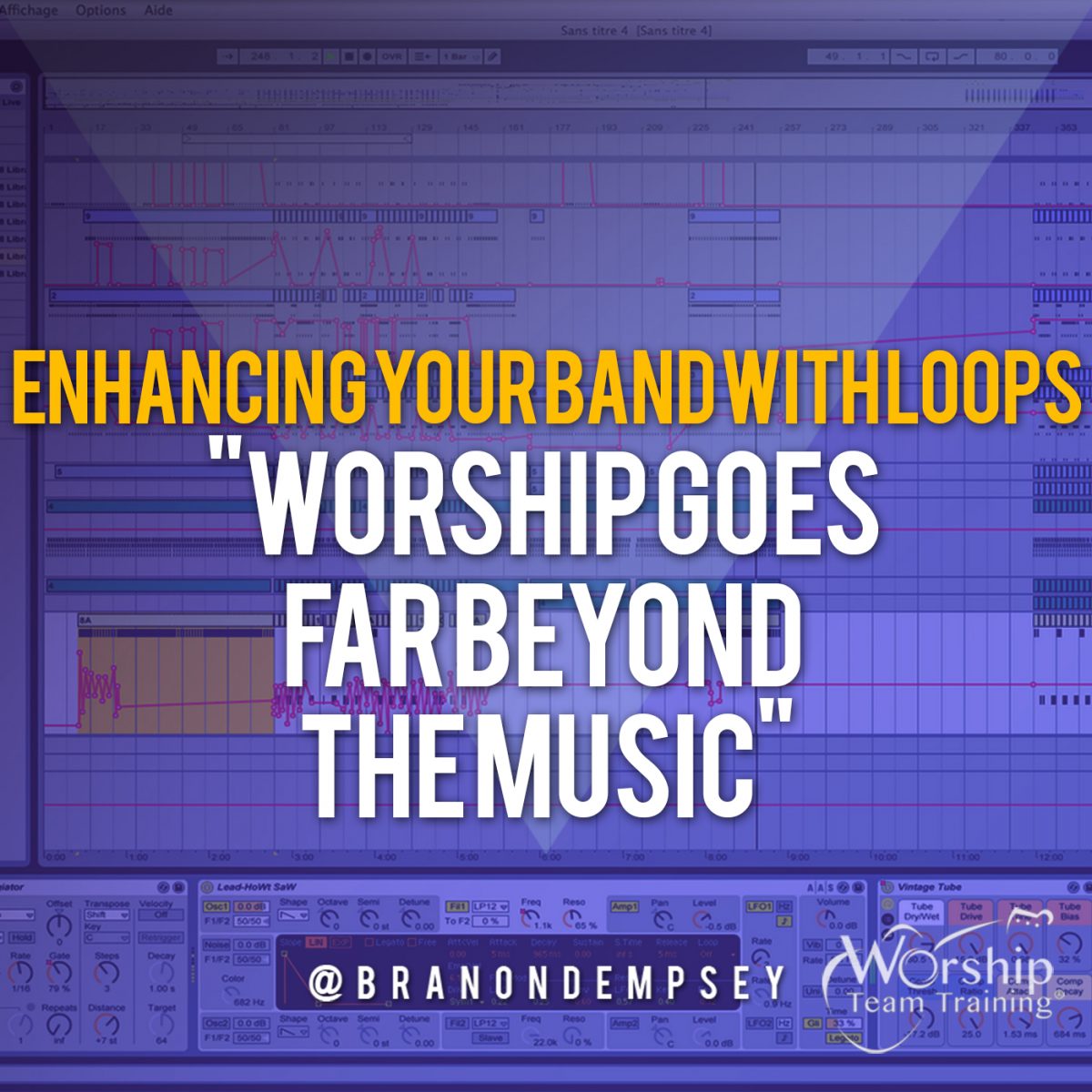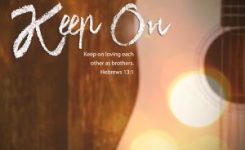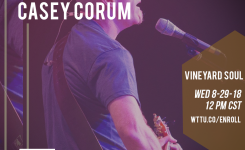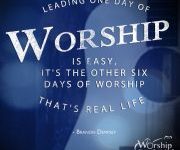Audio, Leaders, Tech, Worship Leading, WTTU Special Public Post
Enhancing Your Band With Loops (Show #119)
4 min read | 30m Show
Are you sure of your band?
As a worship leader, you want to make sure your band sounds the best. You’re never going to do it, until you push yourself to learn. It’s not beyond your grasp, in fact, creativity is right there at your fingertips, we will show you how…These parts, your skills, your team is the target to help you excel in music to help your church worship. If you are tired of the same-ole-same-ole, then listen up!
Let’s face it, you need to tweak both the sound and the creativity of your band. There are a plethora of tools to help enhance the sound. However, what you may not know is that you don’t need to do everything. All you need is a few tricks to make the music (and your players) come alive.
Let’s look at three main things you can do to make your music roar: Melodic Movements, Groove and Click.
WATCH SHOW #119
Just give me the facts
When you listen to songs, what do you hear? Does your attention go to the drums, the guitars or the keyboard synth and loops? If you’re like anybody, you will hear all of the above, a wall of sound and then some.You may even come to the crossroads of saying: “now, what do I do?”
1. Focus on what drives the song?
Songs are based on the simplicity of melody. If you can create a melody of 3-4 notes, sing to it, stretch it into a verse, compact it into the chorus and sprinkle a bit over the band parts – you have a song. For example, look at the song “The Lion and The Lamb” by Leeland Mooring, Brenton Brown and Brian Johnson.
As we move through this song, we will explore both styles to play: Digital Instruments and Acoustic Instruments. No two bands are alike. You have some that use electronic instruments and loops, while others combine your standard 4 piece band: guitar, bass, drums and piano.
This post will help you break-down each of the sections to give you a better idea of how to approach the music on your own.
1. Melodic Movements
Take a snap-shot of the Melody. Let’s look at the intro and the key note movements. If we were to break-down the melody in it’s simplest form we would really be talking about four notes.Today’s demo track: “The Lion and The Lamb” via GuideTracks.co We are playing this song in the Key of G. From the scale of G, we have these notes that make up the melody: G, A, B, C (also numbers 1, 2, 3, 4) These four notes are the primary building blocks of framing not only the melody, but also the entire song.
The beginning of the song also has an arpeggiation of the notes above, with a few added color notes (7ths). They are played by a sequence/loop from either a multitrack program like Ableton or even a synth-keyboard that may have a similar patch sound.
Intro:
When we hear the keyboard/guitar lick in the intro, the sequence is ordered as: 1, 2-2, 3-3, | 1, 2-2, 4 – 3 – 6 – this is the key-note (melodic) movement “The Lion and the Lamb” – learn these notes on your piano/guitar – learn to listen to the type of patch/tone playing the melody – understand how it’s being played Rule of thumb when looking at songs: – learning the key-note movements – identify the primary instruments: electric lead: type of effect, keyboard: type of patch – break-down the melody into simple notes: play the opening melody – isolate the notes – match the right instruments to the music: listen to how the parts are being played – who’s driving the car and why/how does it work?
What is being shown above are the two ways you can play by a digitized sequenced/keyboard version, and an organic acoustic instrument version.
“Worship goes far beyond the music.” @BranonDempsey
2. Groove:
It’s all about that bass and treble. The groove is defined as the rhythm and interplay between the bass and drums. The bass provides the lower register melodic movement and/or anchor; the drums provide the rhythm and syncopation. It’s difficult to have one without the other, they work hand in hand: primarily the kick drum and bass should be one solid instrument.Opening Groove in the Intro and Verse The Bass is playing in a 16th note rhythm. Each note is smooth and even. There are no accents or ticks. It moves right along with the keyboard/piano loop sequence. The Drums are playing with a 16th note syncopation pattern. Accenting the first down-beat pattern – every other bar, with a few accents in between. The hi-hat is playing straight ahead 16th notes. Snare is playing 2 & 4, with a few alternative back beats / ghost notes.
This section is the root of the song. It holds all the other syncopation together in the piano, keys and guitar parts. In this arrangement, you can program bass and drums to play the 16th note parts to help enhance the song.
However, if you do not use loops, your drummer and bass can simplify. Loops are to help fill-out and enhance the song, not to over-take or be a replacement.
They are just an effect, yet you need to look at them as another team player / band instrument voice. If you have the standard 4 piece band, you can get away with simplifying the notes and mimic the groove.
Have the bass play a combination of quarter notes and dotted 16th notes: 1 | a 3 | Let the drums play the 16ths in the hat, try to unify together the bass pattern and drums. It’s important to lock this down. When the Chorus takes off, you’ll hear the whole band come together like a roar.
[ctt template=”10″ link=”1SLl2″ via=”no” ]Make music that brings God praise, make His music roar.[/ctt]
3. The Click:
Have no fear, your new band member is here, he’s called: the Click. Putting it all together: In order for al these parts to work above, you need to have a central source. The click – is a metronome that establishes tempo and helps players stay in time.It can be a high pitched wood block sound or electronic chirp that’s played in straight quarter notes. However, playing with a click is also very challenging in learning how to play in absolute perfect time – it’s a practice within itself. CAUTION: do not wait to learn how to play with the click when you get to rehearsal!
Practice with a click at home first! Too many musicians get frustrated because they do not spend time with their new band member. That’s right, Click just wants to be part of the team, but you have to practice with your music at home.
Here’s the cool thing about Click: – he never has an opinion – always on time – but he doesn’t talk back The biggest thing to realize first is that you need to see Click as a band member.
The fundamental purpose of the click is not only to help you / the band stay in time, but for you to become a better musician.
How do you play with Click? – Stay within each quarter note – learn to stay in-between the click – Match your playing to the timing – When you play on time with the click, the click actually disappears – If you play with the click wrong, you will hear the click against your playing. The idea is to blend with the click – make your timing become one with the tempo. As you move throughout the song, you can hear all the parts gel together. Especially in the bass and drum section. The groove will be perfect and consistent.
What do you play if you don’t have a click?
Number one, do not attempt to play notes/parts that are too challenging. Again, simplify what is happening in the musical activity. Make sure your drummer plays straight eights or sixteenths in the hi-hat with good clarity and dynamic – not loud – just solid tempo. Have the bass guitar follow the drummer.Help unify the kick drum as well. The band as a whole needs to gravitate to the groove section – regardless if you play with a click or not.
Learn the click at home. This will improve your skill, dexterity and sense of time. Yes, even if you don’t play with a click at church, practice with one anyway. Download any good click app from your device store (there are hundreds of them). Set your phone/tablet along with your music and try it out. Start with slow tempos and gradually increase the pulse as you become more comfortable.
Even try just a few sections of the song – not the whole thing yet. Try biting off a few pieces at a time. Later try building this into your church team. Don’t hold up the opportunity for your team to grow. The songs we do are not always driven for one purpose, but many. Increase your skill, learn to glorify God in a new song and style, and importantly, give your church a new voice to sing.
Theme of the week: #LionAndTheLamb
A New Friend
Befriend loops and clicks. Get to know your new willing band members. Again, they are here to help you grow musically. Download sand play the tracks now, have your team members listen to them and gradually introduce them into your band. You will need to put in had work.
There’s no other way around it. There will be blood, sweat and tears, but the pay-off is for your musicianship. Before you know it, your skill will increase and you’ll be playing at a much higher level – but it starts here, it starts with you, but it ultimately begins with God. Respond to God in worship by good teaching and instruction. Bring glory to Him by developing your skill.
Encourage unity and praise to your church as you sing a new song. Let the songs roar!
@BranonDempsey @worshiptt @WorshipTTU
Want to watch MORE Worship Team Training Videos?
Not a WTTU Member, or Choose to Upgrade? Update Now

Worship Team Training® Is your worship team stuck? Want worship leading to be better? Want to be free? We can take you there. Inspire, create and transform the leading of worship. Get a WeekendWorkshop
Copyright 2017 Worship Team Training®










